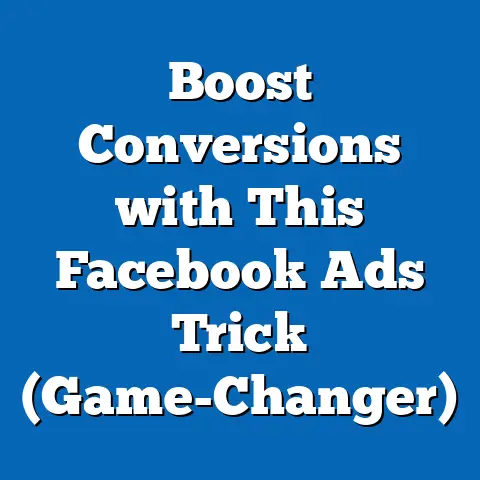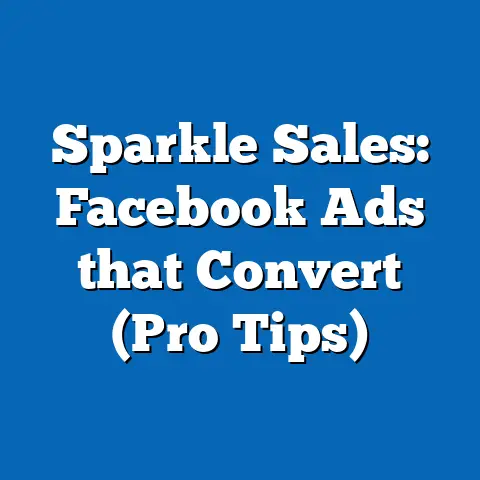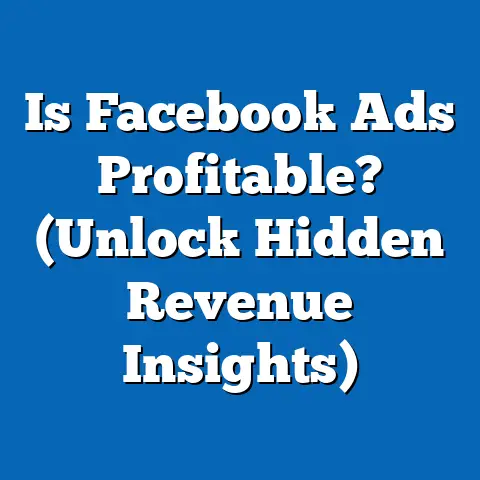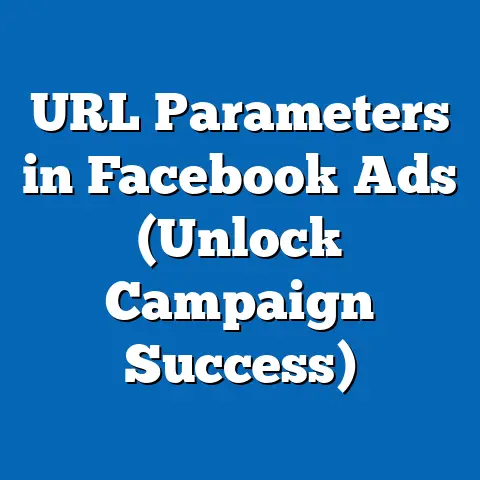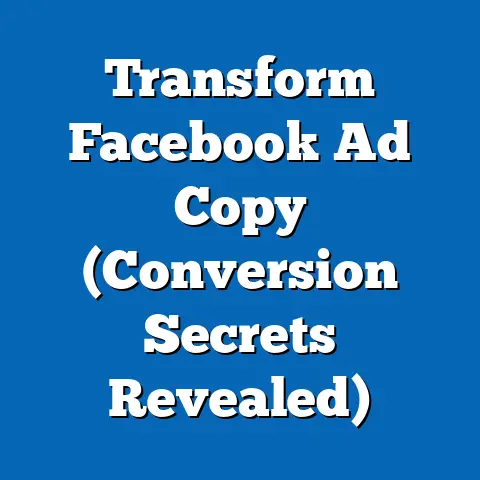Why Are My Facebook Videos Showing Ads? (Insights Revealed)
Have you noticed an increasing number of ads interrupting your Facebook video experience? You’re not alone—billions of users worldwide are encountering more advertisements than ever before as they scroll through their feeds or watch videos on the platform. This isn’t a random glitch; it’s a deliberate strategy by one of the world’s largest social media giants to capitalize on its massive user base and drive revenue.
According to Statista, Facebook (now part of Meta) boasted 2.98 billion monthly active users as of Q2 2023, making it the most widely used social media platform globally. A significant portion of these users—around 2 billion—engage with video content daily, per Meta’s own reports. With such a vast audience, it’s no surprise that advertising revenue has become a cornerstone of Meta’s business model, with ads generating $31.5 billion in Q3 2023 alone, as reported in Meta’s quarterly earnings.
The Rise of Video Content on Facebook: A Goldmine for Advertisers
The Explosion of Video Engagement
Video content has become a dominant force on social media, and Facebook is no exception. According to a 2022 report by Hootsuite, video posts on Facebook receive 59% more engagement than other types of content, such as photos or text updates. Meta itself reported in 2023 that over 50% of time spent on Facebook is dedicated to watching videos, whether short-form Reels or longer uploads.
This shift toward video has created a lucrative opportunity for advertisers. With users spending more time glued to video content, brands can capture attention through targeted ads inserted before, during, or after videos—a format known as in-stream ads.
Historically, Facebook’s ad revenue grew from $1.86 billion in 2012 to $31.5 billion in Q3 2023, according to Meta’s financial statements. This exponential growth reflects a strategic pivot from a user-focused platform to a revenue-driven ecosystem where video content plays a central role.
Why Ads Are Showing on Your Videos: The Mechanics Behind It
Meta’s Monetization Policies
Meta’s decision to place ads on videos is rooted in its monetization policies, which aim to balance user experience with revenue generation. According to Meta’s Creator Studio guidelines, videos that meet specific eligibility criteria—such as having at least 1,000 followers and generating 600,000 total minutes of viewership in the last 60 days—can automatically feature in-stream ads. Even if you’re not a creator, ads may appear on public videos or content shared widely due to algorithmic distribution.
These ads are typically 5-15 seconds long and can appear before (pre-roll), during (mid-roll), or after (post-roll) a video. Meta splits the revenue with creators, offering 55% of ad earnings to eligible content producers, as per their official policy.
Algorithmic Targeting and User Behavior
Facebook’s algorithm plays a significant role in determining which videos show ads and to whom. The platform uses machine learning to analyze user behavior, interests, and demographics to serve relevant advertisements. For instance, a 2021 study by Pew Research Center found that 74% of U.S. adults on Facebook feel ads are tailored to their interests, often based on data from their viewing habits.
This targeting extends to video content. If you frequently watch fitness videos, you’re likely to see ads for workout gear or supplements during those videos. Meta’s ad placement system prioritizes high-engagement content, meaning popular videos are more likely to feature ads to maximize reach and revenue.
Data Source: How Meta Tracks Engagement
Meta collects data through user interactions (likes, shares, comments), time spent on content, and even off-platform activity via tracking pixels and partnerships. A 2022 report by the Electronic Frontier Foundation (EFF) highlighted that Meta tracks over 200 data points per user, including video watch history, to optimize ad delivery. This granular data collection ensures that ads are not just frequent but hyper-relevant to your interests.
Demographic Patterns: Who Sees the Most Ads?
Age and Location Differences
Not all Facebook users experience the same frequency of ads, and demographic factors play a significant role. According to a 2023 survey by eMarketer, younger users aged 18-34 in the U.S. report seeing more video ads compared to older users (55+), likely due to their higher engagement with video content like Reels. Specifically, 68% of 18-24-year-olds reported frequent ad interruptions, compared to just 41% of users over 55.
Geographically, users in high-income regions like North America and Western Europe are more likely to see ads due to higher advertising rates. Meta’s 2023 earnings report shows that the average revenue per user (ARPU) in the U.S. and Canada was $58.77, compared to just $4.61 in the Asia-Pacific region. Advertisers pay more to reach users in wealthier markets, resulting in more ad exposure for those audiences.
Gender and Interest-Based Targeting
Gender also influences ad exposure, though indirectly through interests and behavior. A 2022 study by DataReportal found that women on Facebook are more likely to engage with lifestyle and beauty content (62% of female users), often triggering related ads, while men are more likely to see ads tied to tech and gaming (58% of male users). These patterns reflect how Meta’s algorithm tailors ad content based on user activity rather than gender alone.
Historical Trends vs. Current Data: How Ad Frequency Has Changed
The Early Days of Facebook Ads (2007-2015)
In its early years, Facebook relied on sidebar ads and sponsored posts, with minimal intrusion into user-generated content. A 2012 report by Business Insider noted that ad revenue accounted for just 84% of Facebook’s total income, with the rest coming from payments and other services. Video ads were virtually nonexistent until 2014, when autoplay video ads were introduced in the News Feed.
At that time, user backlash was significant, with a 2014 survey by YouGov finding that 62% of users found video ads “annoying.” Despite this, Meta persisted, recognizing the potential of video as an advertising medium.
The Modern Era (2016-Present)
By 2017, in-stream video ads became a staple, and their frequency has only increased. A 2021 report by Social Media Today revealed that the average Facebook user now sees 6-8 ads per session, with video ads making up roughly 40% of these placements. This is a stark contrast to 2015, when users encountered just 2-3 ads per session, per historical data from eMarketer.
The rise of short-form video content, like Reels (launched in 2020), has further amplified ad exposure. Meta reported in 2023 that Reels account for over 200 billion daily views across its platforms, providing countless opportunities for ad insertions.
Visualizing the Trend
If we were to chart this data, a line graph would show a steep upward trajectory in ad frequency from 2012 to 2023, with notable spikes around 2017 (in-stream ads launch) and 2020 (Reels introduction). A bar chart comparing ad types would highlight the growing dominance of video ads, rising from 5% of total ad impressions in 2015 to 40% in 2023, based on eMarketer estimates.
Why Meta Pushes Video Ads: The Financial Incentive
Revenue Breakdown
Meta’s financial reports offer clear insight into why video ads are prioritized. In Q3 2023, advertising revenue accounted for 98% of Meta’s total income, with video ads contributing significantly to this figure. Analysts at Bernstein Research estimate that in-stream video ads alone generate approximately 25% of Meta’s ad revenue, or roughly $8 billion quarterly.
This financial incentive drives Meta to increase ad placements, even at the risk of user dissatisfaction. Unlike subscription-based platforms, Meta relies almost entirely on ads to fund its operations, including investments in AI, the metaverse, and infrastructure.
A 2022 report by Insider Intelligence noted that TikTok’s ad revenue grew by 155% year-over-year, reaching $11.6 billion, prompting Meta to double down on short-form video ads to capture similar growth. This competitive landscape explains the urgency behind Meta’s ad-heavy approach.
User Impact: How Ads Affect the Facebook Experience
Engagement and Frustration
While ads generate revenue for Meta, they can detract from user experience. A 2023 survey by Statista found that 54% of U.S. Facebook users feel “overwhelmed” by the frequency of ads, with 29% reporting they skip videos entirely due to pre-roll or mid-roll interruptions. This frustration is particularly pronounced among younger users, with 67% of 18-24-year-olds expressing annoyance, per the same survey.
Despite this, engagement remains high due to the addictive nature of video content. Meta reported in 2023 that daily active users increased by 5% year-over-year to 2.09 billion, suggesting that ads, while irritating, haven’t driven away the majority of users.
Privacy Concerns
The data collection required for targeted video ads also raises privacy concerns. A 2022 Pew Research Center survey found that 81% of U.S. adults worry about how social media platforms use their data, with 64% specifically citing ad targeting as a concern. Meta’s tracking practices, including cross-platform data sharing, amplify these fears, even as the company insists it prioritizes user control through privacy settings.
Broader Implications: What This Means for Users and the Industry
For Users: Adapting to an Ad-Driven Platform
The increasing prevalence of video ads on Facebook signals a broader shift toward monetization over user experience. For users, this means adapting to frequent interruptions or exploring ad-blocking tools, though Meta actively counters such measures. Alternatively, users can adjust privacy settings to limit data collection, though this won’t eliminate ads entirely.
For Creators: Opportunities and Challenges
Content creators stand to benefit from Meta’s ad revenue-sharing model, with the potential to earn 55% of in-stream ad earnings. However, smaller creators often struggle to meet eligibility criteria, creating a barrier to entry. A 2023 report by Influencer Marketing Hub noted that only 12% of Facebook creators qualify for monetization, highlighting the challenges of this system.
For the Industry: A Race for Ad Dollars
Meta’s focus on video ads reflects a larger trend in the social media industry, where platforms compete for advertising dollars through innovative formats. As video consumption grows—projected to account for 82% of internet traffic by 2025, per Cisco’s Annual Internet Report—expect even more ad integrations across platforms. This race could further blur the line between content and commerce, reshaping how we interact with social media.
Conclusion: The Future of Facebook Video Ads
The presence of ads in your Facebook videos is no accident; it’s the result of a calculated strategy by Meta to maximize revenue from its 2.98 billion users. With video content driving unprecedented engagement—over 50% of time spent on the platform—ads have become an unavoidable part of the experience, fueled by sophisticated targeting and a competitive digital landscape. Historical trends show a clear shift from minimal ads in the early 2010s to an average of 6-8 per session today, with video ads leading the charge at 40% of impressions.
Demographic patterns reveal that younger users and those in high-income regions bear the brunt of ad frequency, while privacy concerns and user frustration continue to mount. Yet, Meta’s financial success—$31.5 billion in ad revenue in Q3 2023—suggests this model isn’t going away anytime soon. As video consumption grows and competition intensifies, the line between content and advertising will only become blurrier, challenging users, creators, and the industry to adapt to an increasingly commercialized digital world.
What does this mean for you? Whether you’re a casual user or a content creator, understanding the mechanics behind Facebook’s video ads empowers you to navigate the platform more effectively—be it through privacy settings, content strategies, or simply accepting ads as part of the social media bargain. The future of Facebook, and indeed all social platforms, lies in balancing profitability with user satisfaction, a tightrope walk that will shape online experiences for years to come.


